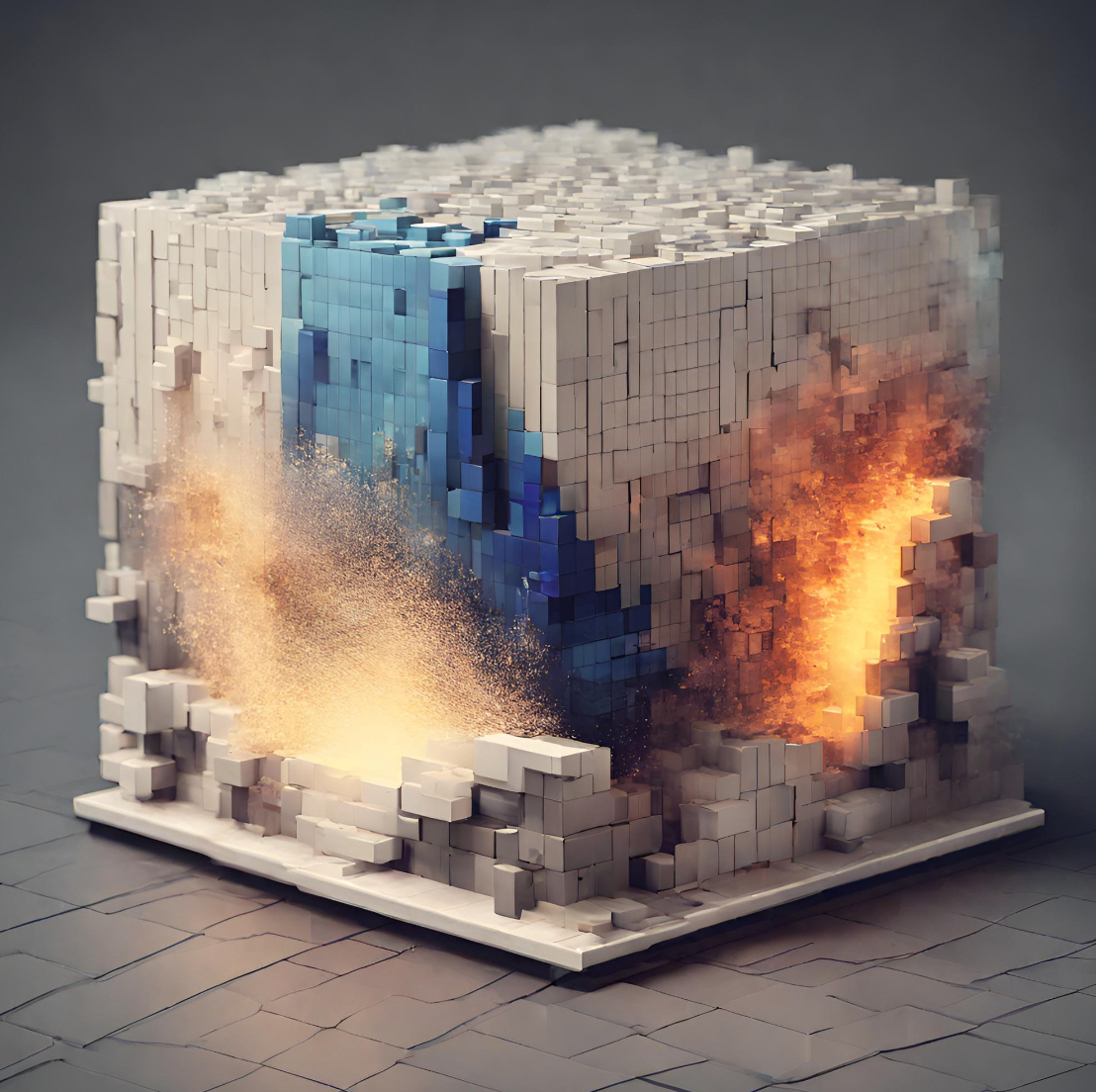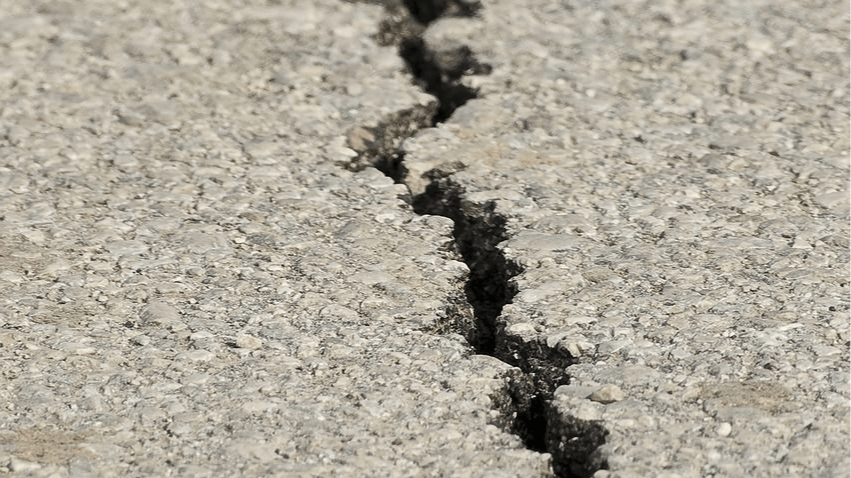Authors:
(1) Cody Rucker, Department of Computer Science, University of Oregon and Corresponding author;
(2) Brittany A. Erickson, Department of Computer Science, University of Oregon and Department of Earth Sciences, University of Oregon.
Table of Links
Abstract and 1. Context and Motivation
- Physics-Informed Deep Learning Framework
- Learning Problems for Earthquakes on Rate-and-State Faults
- 2D Verification, Validation and Applications
- Summary and Future Work and References
5. Summary and Future Work
We have presented a computational framework for physics-informed neural networks (PINNs) for solving the elastodynamic wave equation with a rate-and-state frictional fault boundary in both 1D and 2D. We consider both forward and inverse problems, with the latter obtained by extending to a multi-network architecture in order to learn depth-dependent friction parameters alongside deformations in the Earth’s crust. We verified the computational framework by applying the method of manufactured solutions to probe various error measurements. We show that in general, hard enforcement of boundary conditions result in trained networks that better approximate displacements and friction parameters but tend to be worse at minimizing component loss functions when compared to soft enforcement. We found that a PINN defined by hard enforcement of initial conditions produces reasonable approximations for displacements and the desired friction parameter distribution. Though the network is meshfree, we show that successive mesh refinements of the quadrature approximation to the L 2 -error yield near constant values, suggesting that the PINN provides a reasonable approximation to the solution even when evaluated on increasingly finer grids. Moreover, although the network requires sufficient training iterations to properly learn displacements, the desired friction parameter is learned within the first couple of iterations. This suggests that PINNs may be a highly effective tool in inferring subsurface friction properties along faults, constrained by both physics and observational surface data.
While the PINN is shown to perform well when learning the state variable in 1D, and inferring depth-dependency of RSF parameter a − b at steady-state in 2D, we plan to explore the capabilities of the 2D framework with non-steadystate-evolution. This extension requires additional networks in the 2D setting in order to approximate the state variable, and two inference networks to capture the empirical parameters a and b (which become separated across governing equations), and/or networks to learn other frictional parameters, such as Dc, whose scaling from laboratory values to actual fault zones is the subject of many studies [e.g. 37]. Approaching such a problem may be aided by a better understanding of the PINN dependence on problem configuration as well as network architecture. Additionally, it would be worthwhile to investigate methods which hybridize PINNs with traditional numerical methods similar to the discrete time PINN in Raissi et al. [43]. And finally, with a PINN solution that can handle learning full rate-and-state fault friction in 2D (and eventually 3D), we would be ready to compare model outcomes against community benchmark problems concerning dynamic rupture simulations [20] and sequences of earthquakes and aseismic slip [12].
References
[1] Atwater, B.F., Satoko, M.R., Kenji, S., Yoshinobu, T., Kazue, U., Yamaguchi, D.K., 2005. The Orphan Tsunami of 1700: Japanese Clues to a Parent Earthquake in North America. 2 ed., University of Washington Press. URL: http://www.jstor.org/stable/j.ctvcwnbrv.
[2] Bergen, K.J., Johnson, P.A., de Hoop, M.V., Beroza, G.C., 2019. Machine learning for data-driven discovery in solid earth geoscience. Science 363, eaau0323. doi:10.1126/science.aau0323.
[3] Brodsky, E.E., Mori, J.J., Anderson, L., Chester, F.M., Conin, M., Dunham, E.M., Eguchi, N., Fulton, P.M., Hino, R., Hirose, T., Ikari, M.J., Ishikawa, T., Jeppson, T., Kano, Y., Kirkpatrick, J., Kodaira, S., Lin, W., Nakamura, Y., Rabinowitz, H.S., Regalla, C., Remitti, F., Rowe, C., Saffer, D.M., Saito, S., Sample, J., Sanada, Y., Savage, H.M., Sun, T., Toczko, S., Ujiie, K., Wolfson-Schwehr, M., Yang, T., 2020. The state of stress on the fault before, during, and after a major earthquake. Annual Review of Earth and Planetary Sciences 48, 49–74. doi:10.1146/ annurev-earth-053018-060507.
[4] Byrd, R.H., Lu, P., Nocedal, J., Zhu, C., 1995. A limited memory algorithm for bound constrained optimization. SIAM Journal on scientific computing 16, 1190–1208. doi:10.1137/0916069.
[5] Cai, S., Wang, Z., Wang, S., Perdikaris, P., Karniadakis, G.E., 2021. Physics-informed neural networks for heat transfer problems. Journal of Heat Transfer 143. doi:10.1115/1.4050542.
[6] Ciarlet, P.G., 2002. The finite element method for elliptic problems. volume 40. Siam.
[7] Cuomo, S., Di Cola, V.S., Giampaolo, F., Rozza, G., Raissi, M., Piccialli, F., 2022. Scientific machine learning through physics–informed neural networks: Where we are and what’s next. Journal of Scientific Computing 92, 88. doi:10.1007/s10915-022-01939-z.
[8] De Ryck, T., Jagtap, A.D., Mishra, S., 2022. Error estimates for physics informed neural networks approximating the navier-stokes equations. arXiv preprint arXiv:2203.09346 doi:10.48550/arXiv.2203.09346.
[9] De Ryck, T., Lanthaler, S., Mishra, S., 2021. On the approximation of functions by tanh neural networks. Neural Networks 143, 732–750. doi:10. 1016/j.neunet.2021.08.015.
[10] Dieterich, J.H., 1979. Modeling of rock friction 1. Experimental results and constitutive equations. Journal of Geophysical Research, [Solid Earth] 84, 2161–2168. doi:10.1029/JB084iB05p02161.
[11] Erickson, B.A., Dunham, E.M., 2014. An efficient numerical method for earthquake cycles in heterogeneous media: Alternating subbasin and surface-rupturing events on faults crossing a sedimentary basin. Journal of Geophysical Research-Solid Earth 119, 3290–3316. doi:10.1002/ 2013JB010614.
[12] Erickson, B.A., Jiang, J., Barall, M., Lapusta, N., Dunham, E.M., Harris, R., Abrahams, L.S., Allison, K.L., Ampuero, J.P., Barbot, S., Cattania, C., Elbanna, A., Fialko, Y., Idini, B., Kozdon, J.E., Lambert, V., Liu, Y., Luo, Y., Ma, X., Mckay, M.B., Segall, P., Shi, P., van den Ende, M., Wei, M., 2020. The community code verification exercise for simulating sequences of earthquakes and aseismic slip (SEAS). Seismol. Res. Lett. 91, 874–890. doi:10.1785/0220190248.
[13] Erickson Laboratory, . Earthquake PINNs. https://github.com/Thrase/EQ pinns. Accessed: 2023-09-16.
[14] Ern, A., Guermond, J.L., 2004. Theory and practice of finite elements. volume 159. Springer. doi:10.1007/978-1-4757-4355-5.
[15] Fukushima, R., Kano, M., Hirahara, K., 2023. Physics-informed neural networks for fault slip monitoring: simulation, frictional parameter estimation, and prediction on slow slip events in a spring-slider system. ESS Open Archive doi:10.22541/essoar.168988460.01601423/v1.
[16] Givoli, D., 2021. A tutorial on the adjoint method for inverse problems. Computer Methods in Applied Mechanics and Engineering 380, 113810. doi:10.1016/j.cma.2021.113810.
[17] Glorot, X., Bengio, Y., 2010. Understanding the difficulty of training deep feedforward neural networks, in: Proceedings of the thirteenth international conference on artificial intelligence and statistics, JMLR Workshop and Conference Proceedings. pp. 249–256.
[18] Goswami, S., Anitescu, C., Chakraborty, S., Rabczuk, T., 2020. Transfer learning enhanced physics informed neural network for phase-field modeling of fracture. Theoretical and Applied Fracture Mechanics 106, 102447. doi:10.1016/j.tafmec.2019.102447.
[19] Haghighat, E., Raissi, M., Moure, A., Gomez, H., Juanes, R., 2021. A physics-informed deep learning framework for inversion and surrogate modeling in solid mechanics. Computer Methods in Applied Mechanics and Engineering 379, 113741. doi:10.1016/j.cma.2021.113741.
[20] Harris, R.A., Barall, M., Archuleta, R., Dunham, E.M., Aagaard, B., Ampuero, J.P., Bhat, H., Cruz-Atienza, V., Dalguer, L., Dawson, P., Day, S., Duan, B., Ely, G., Kaneko, Y., Kase, Y., Lapusta, N., Liu, Y., Ma, S., Oglesby, D., Olsen, K., Pitarka, A., Song, S., Templeton, E., 2009. The SCEC/USGS dynamic earthquake rupture code verification exercise. Seismol. Res. Lett. 80, 119–126. doi:10.1785/gssrl.80.1.119.
[21] Harvey, T.W., Erickson, B.A., Kozdon, J.E., 2023. A high-order accurate summation-by-parts finite difference method for fully-dynamic earthquake sequence simulations within sedimentary basins. Journal of Geophysical Research: Solid Earth , e2022JB025357doi:10.1029/2022JB025357.
[22] Ide, S., Beroza, G.C., Shelly, D.R., Uchide, T., 2007. A scaling law for slow earthquakes. Nature 447, 76–79.
[23] Jagtap, A.D., Kharazmi, E., Karniadakis, G.E., 2020. Conservative physics-informed neural networks on discrete domains for conservation laws: Applications to forward and inverse problems. Computer Methods in Applied Mechanics and Engineering 365, 113028. doi:10.1016/j.cma. 2020.113028.
[24] Jin, X., Cai, S., Li, H., Karniadakis, G.E., 2021. Nsfnets (navierstokes flow nets): Physics-informed neural networks for the incompressible navier-stokes equations. Journal of Computational Physics 426, 109951. doi:https://doi.org/10.1016/j.jcp.2020.109951.
[25] Karimpouli, S., Tahmasebi, P., 2020. Physics informed machine learning: Seismic wave equation. Geoscience Frontiers 11, 1993–2001. doi:10.1016/ j.gsf.2020.07.007.
[26] Karniadakis, G.E., Kevrekidis, I.G., Lu, L., Perdikaris, P., Wang, S., Yang, L., 2021. Physics-informed machine learning. Nature Reviews Physics 3, 422–440. doi:10.1038/s42254-021-00314-5.
[27] Kern, M., 2016. Numerical methods for inverse problems. John Wiley & Sons.
[28] Kharazmi, E., Zhang, Z., Karniadakis, G.E., 2019. Variational physicsinformed neural networks for solving partial differential equations. arXiv preprint arXiv:1912.00873 doi:10.48550/arXiv.1912.00873.
[29] Kharazmi, E., Zhang, Z., Karniadakis, G.E., 2021. hp-vpinns: Variational physics-informed neural networks with domain decomposition. Computer Methods in Applied Mechanics and Engineering 374, 113547. doi:10.1016/ j.cma.2020.113547.
[30] Kollmannsberger, S., D’Angella, D., Jokeit, M., Herrmann, L., et al., 2021. Deep Learning in Computational Mechanics. Springer.
[31] Kong, Q., Trugman, D.T., Ross, Z.E., Bianco, M.J., Meade, B.J., Gerstoft, P., 2018. Machine Learning in Seismology: Turning Data into Insights. Seismological Research Letters 90, 3–14. doi:10.1785/0220180259.
[32] Kutyniok, G., 2022. The mathematics of artificial intelligence. arXiv preprint arXiv:2203.08890 doi:10.48550/arXiv.2203.08890.
[33] Lagaris, I.E., Likas, A., Fotiadis, D.I., 1998. Artificial neural networks for solving ordinary and partial differential equations. IEEE transactions on neural networks 9, 987–1000. doi:10.1109/72.712178.
[34] Lagaris, I.E., Likas, A.C., Papageorgiou, D.G., 2000. Neural-network methods for boundary value problems with irregular boundaries. IEEE Transactions on Neural Networks 11, 1041–1049. doi:10.1109/72.870037.
[35] Mao, Z., Jagtap, A.D., Karniadakis, G.E., 2020. Physics-informed neural networks for high-speed flows. Computer Methods in Applied Mechanics and Engineering 360, 112789. doi:10.1016/j.cma.2019.112789.
[36] Marone, C., 1998. Laboratory-derived friction laws and their application to seismic faulting. Ann. Rev. Earth Pl. Sc. 26, 643–696. doi:10.1146/ annurev.earth.26.1.643.
[37] Marone, C., Kilgore, B., 1993. Scaling of the critical slip distance for seismic faulting with shear strain in fault zones. Nature 362, 618–621. doi:10.1038/362618a0.
[38] Mishra, S., Molinaro, R., 2022a. Estimates on the generalization error of physics-informed neural networks for approximating a class of inverse problems for pdes. IMA Journal of Numerical Analysis 42, 981–1022. doi:10.1093/imanum/drab032.
[39] Mishra, S., Molinaro, R., 2022b. Estimates on the generalization error of physics-informed neural networks for approximating pdes. IMA Journal of Numerical Analysis doi:10.1093/imanum/drab093.
[40] Muller, J., Zeinhofer, M., 2023. Achieving high accuracy with pinns via energy natural gradients. arXiv preprint arXiv:2302.13163 doi:10.48550/ arXiv.2302.13163.
[41] National Academies of Sciences, Engineering, and Medicine and others, 2020. A vision for NSF Earth sciences 2020-2030: Earth in time. National Academies Press, Washington, DC.
[42] Okazaki, T., Ito, T., Hirahara, K., Ueda, N., 2022. Physics-informed deep learning approach for modeling crustal deformation. Nature Communications 13, 7092. doi:10.1038/s41467-022-34922-1.
[43] Raissi, M., Perdikaris, P., Karniadakis, G.E., 2019. Physics-informed neural networks: A deep learning framework for solving forward and inverse problems involving nonlinear partial differential equations. Journal of Computational physics 378, 686–707. doi:10.1016/j.jcp.2018.10.045.
[44] Roache, P., 1998. Verification and Validation in Computational Science and Engineering. 1 ed., Hermosa Publishers, Albuquerque, NM.
45] Ruina, A., 1983. Slip instability and state variable friction laws. J. Geophys. Res. Solid Earth 88, 10359–10370. doi:10.1029/JB088iB12p10359.
[46] Scholz, C.H., 2019. The Mechanics of Earthquakes and Faulting. 3 ed., Cambridge University Press. doi:10.1017/9781316681473.
[47] Shin, YeonjongDarbon, J., Em Karniadakis, G., 2020. On the convergence of physics informed neural networks for linear second-order elliptic and parabolic type pdes. Communications in Computational Physics 28, 2042– 2074. doi:10.4208/cicp.OA-2020-0193.
[48] Shin, Y., Zhang, Z., Karniadakis, G.E., 2023. Error estimates of residual minimization using neural networks for linear pdes. Journal of Machine Learning for Modeling and Computing 4, 73–101. doi:10.1615/ JMachLearnModelComput.2023050411.
[49] Sun, L., Gao, H., Pan, S., Wang, J.X., 2020. Surrogate modeling for fluid flows based on physics-constrained deep learning without simulation data. Computer Methods in Applied Mechanics and Engineering 361, 112732. doi:10.1016/j.cma.2019.112732.
[50] van den Ende, M., Chen, J., Ampuero, J.P., Niemeijer, A., 2018. A comparison between rate-and-state friction and microphysical models, based on numerical simulations of fault slip. Tectonophysics 733, 273–295. doi:10.1016/j.tecto.2017.11.040.
[51] Wang, BoZhang, W., Cai, W., 2020. Multi-scale deep neural network (mscalednn) methods for oscillatory stokes flows in complex domains. Communications in Computational Physics 28, 2139–2157. doi:10.4208/cicp. OA-2020-0192.
[52] Yu, B., et al., 2018. The deep ritz method: a deep learning-based numerical algorithm for solving variational problems. Communications in Mathematics and Statistics 6, 1–12. doi:10.1007/s40304-018-0127-z.
[53] Zhao, J., Ling, H., Liu, J., Wang, J., Burke, A.F., Lian, Y., 2023. Machine learning for predicting battery capacity for electric vehicles. eTransportation 15, 100214. doi:10.1016/j.etran.2022.100214.
This paper is available on arxiv under CC BY 4.0 DEED license.

